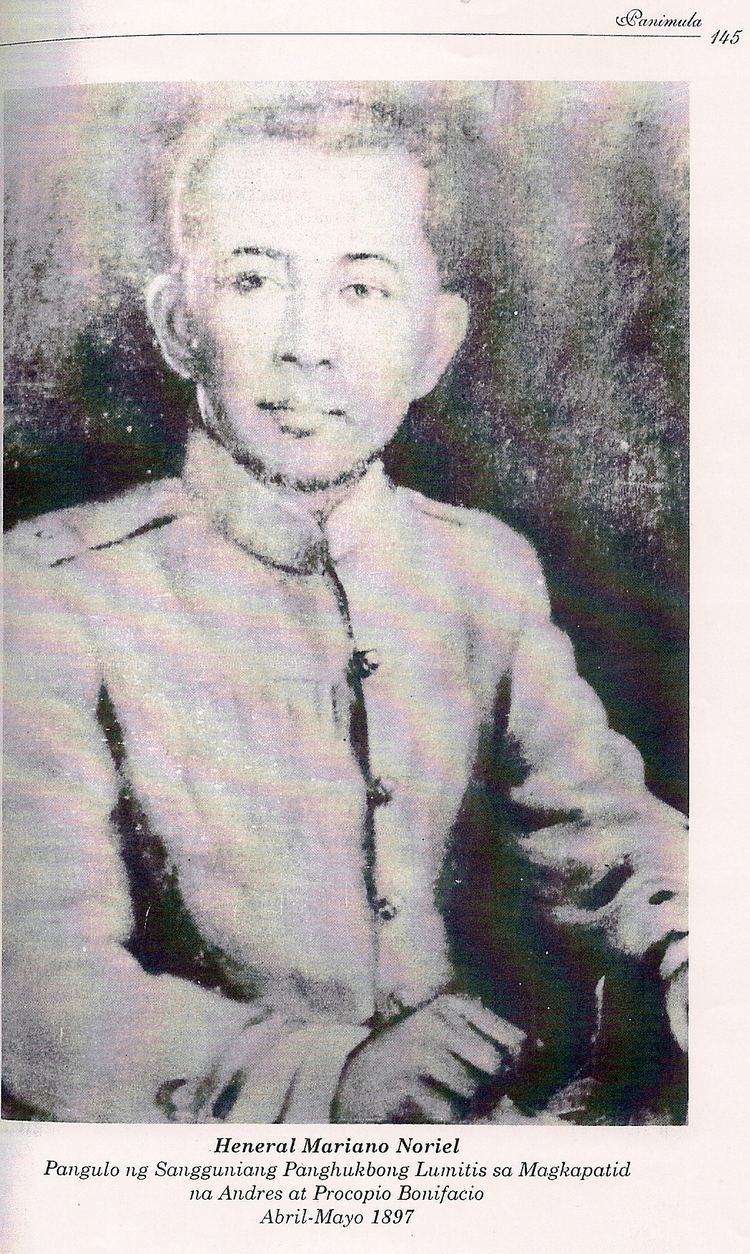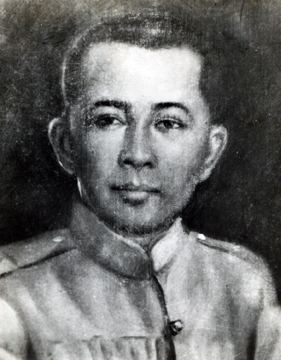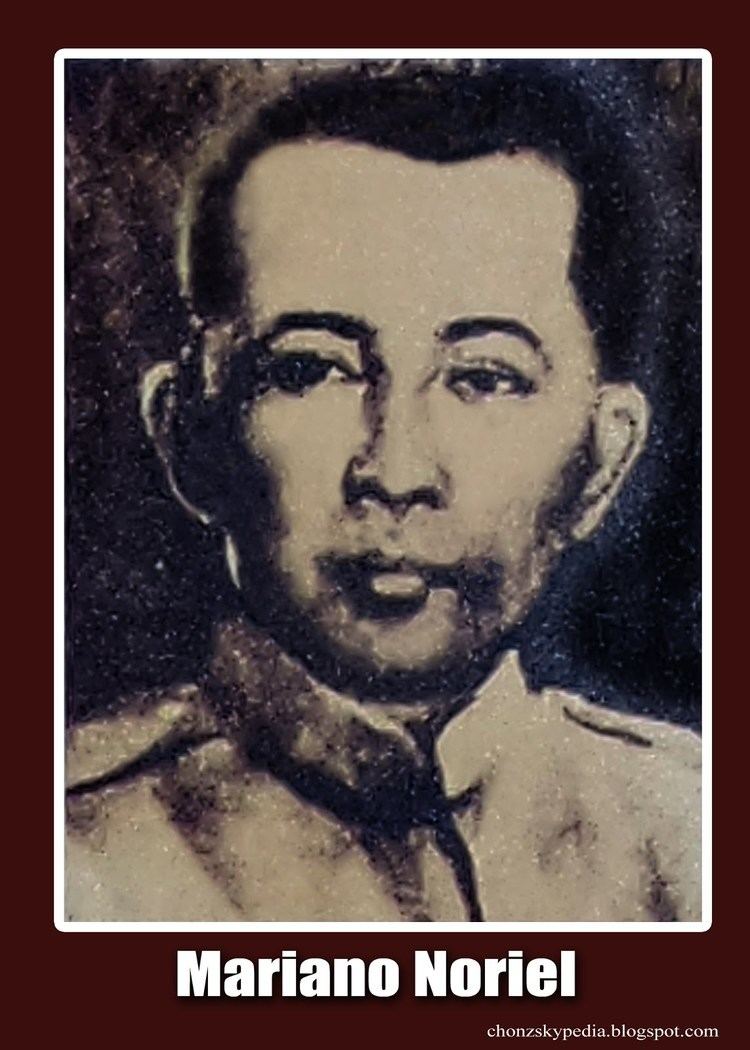Years of service 1897–1899 Rank Brigadier General | Name Mariano Noriel | |
 | ||
Battles/wars Philippine RevolutionPhilippine-American War Place of burial Manila North Cemetery, Manila, Philippines, Santa Cruz, Manila, Philippines, Manila, Philippines, Philippines Battles and wars | ||
Mariano Noriel (1864 - January 27, 1915) was a Filipino general who fought during the Philippine Revolution and the Philippine-American War. He was member of the War Council that handled the case of Andres Bonifacio in 1897. He led Filipino advance troops before the American army landed in Intramuros in 1898.
Contents

Early life and career

A native of Bacoor, Cavite, General Mariano Noriel was born in 1864. There is no available information about the exact date and place of his birth, nor about his parents, education, and other personal data.
Noriel was the president of the Council of War that tried the Bonifacio brothers (Andres and Procopio) in Naik and later in Maragondon in May 1897. Convicted of sedition and treason, Andres and Procopio were sentenced to death but Gen. Emilio Aguinaldo, president of the newly established Revolutionary Government, commuted the death verdict to banishment to the Pico de Loro Mountain in Maragondon. The commutation, however, was later withdrawn due to strong pressure from senior army officers and prominent citizens, including General Pio del Pilar and Gen. Noriel himself who believed that the two brothers, if allowed to live, would endanger the Revolution.
The withdrawal of the commutation order was construed by Noriel, who was also in charge of the prisoners, as a go signal for the execution of the sentence, and so he had the two brothers shot to death a squad of soldiers under Major Lazaro Macapagal on Mount Nagpatong (not Mount Buntis as reported in history books), Maragondon, May 10, 1897.
Aguinaldo, in the book A Second Look at America, which he co-authored with Vicente Albano Pacis but later disauthorized, claims that his withdrawal of the commutation order did not mean immediate implementation of the death verdict. He says he wanted a little more time for a cooling-off period so that eventually the Bonifacio brothers would be forgiven and pardoned. This is in accord with Aguinaldo’s well-known humanist and compassionate character. However, this continues to be a controversial point in Philippine history.
Life after the Philippine Revolution
History has a way of putting a strange twist to the life story of Noriel. The records show that the doughty Bacoor general, along with the two others, was sentenced to death for the murder of a man in the Bacoor cockpit in May 1909. The Court of First Instance decision on the case was later confirmed by the Philippine Supreme Court, so it was appealed by an Irish-American lawyer named Amzi B. Kelly, to the Supreme Court of the United States which subsequently reversed the decision. But before the final verdict was received from Washington, Noriel and his co-accused had already been executed by hanging in Manila on January 27, 1915.
